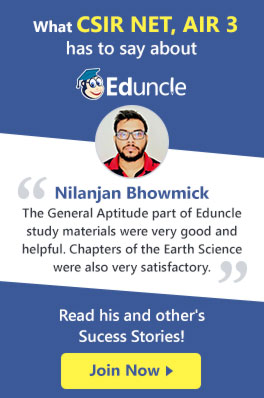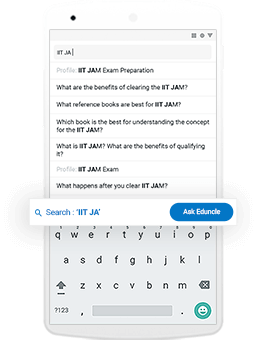Time management is very much important in IIT JAM. The eduncle test series for IIT JAM Mathematical Statistics helped me a lot in this portion. I am very thankful to the test series I bought from eduncle.
Nilanjan Bhowmick AIR 3, CSIR NET (Earth Science)
B
Bishal Paul posted an Question
April 22, 2021 • 00:16 am
![]() 30 points
30 points
- CSIR NET
- Life Sciences
Please provide me a short note on non homologous recombination
what is non homologous recombination and explain the topic with diagram
1 Answer(s)
Answer Now
- 0 Likes
- 1 Comments
- 0 Shares
-
![comment-profile-img]() >
>
T
Do You Want Better RANK in Your Exam?
Start Your Preparations with Eduncle’s FREE Study Material
- Updated Syllabus, Paper Pattern & Full Exam Details
- Sample Theory of Most Important Topic
- Model Test Paper with Detailed Solutions
- Last 5 Years Question Papers & Answers
Sign Up to Download FREE Study Material Worth Rs. 500/-










 >
>







Krishan k jakhad![best-answer]()
Non-homologous end joining is a pathway that repairs double-strand breaks in DNA. NHEJ is referred to as "non-homologous" because the break ends are directly ligated without the need for a homologous template, in contrast to homology directed repair thus ... NHEJ is a homology-independent repair pathway initiated by the binding of Ku70-80 heterodimer to broken DNA ends with high affinity. Ku then recruits the Ser/Thr kinase, which leads to phosphorylation of Artemis..cleave single strand overhangs, DNA ligase IV and scaffolding protein XRCC4 phosphorylation. DNA ligase catalysed the ligation of DNA ends. NHEJ is typically guided by short homologous DNA sequences called microhomologies. These microhomologies are often present in single-stranded overhangs on the ends of double-strand breaks. When the overhangs are perfectly compatible, NHEJ usually repairs the break accurately. Imprecise repair leading to loss of nucleotides can also occur, but is much more common when the overhangs are not compatible. Inappropriate NHEJ can lead to translocations and telomere fusion, hallmarks of tumor cells. NHEJ implementations are understood to have been existent throughout nearly all biological systems and it is the predominant double-strand break repair pathway in mammalian cells.